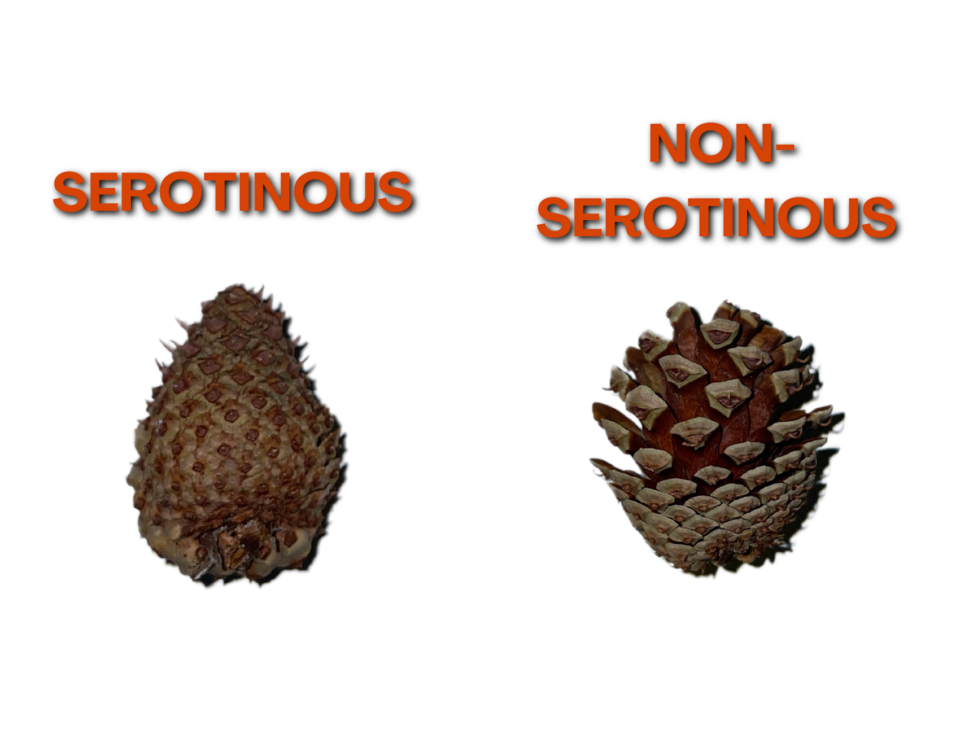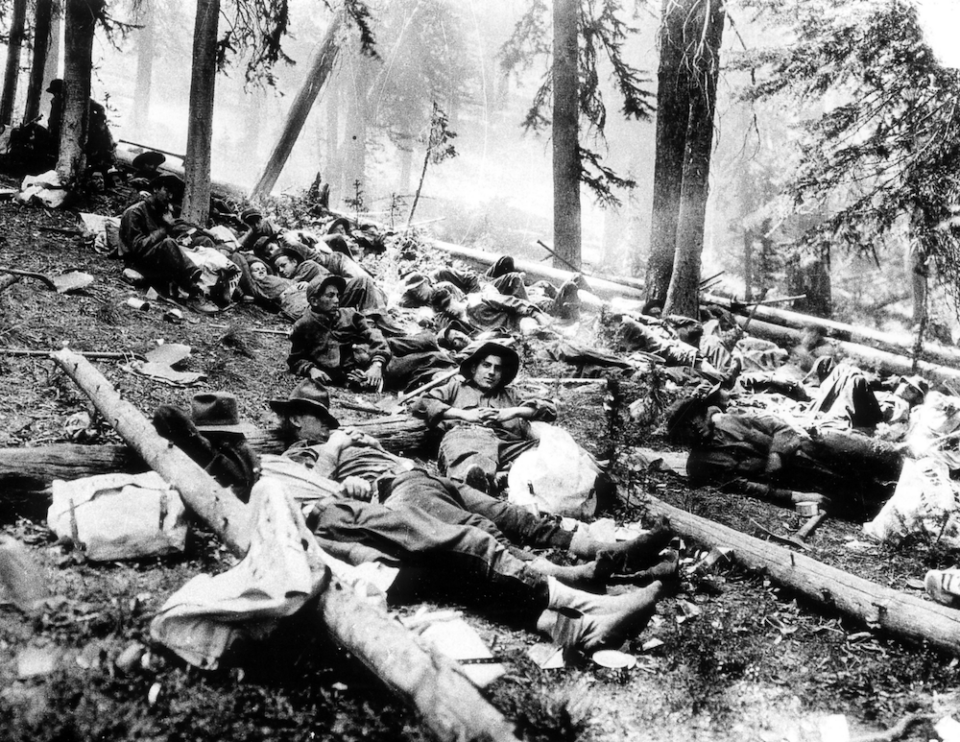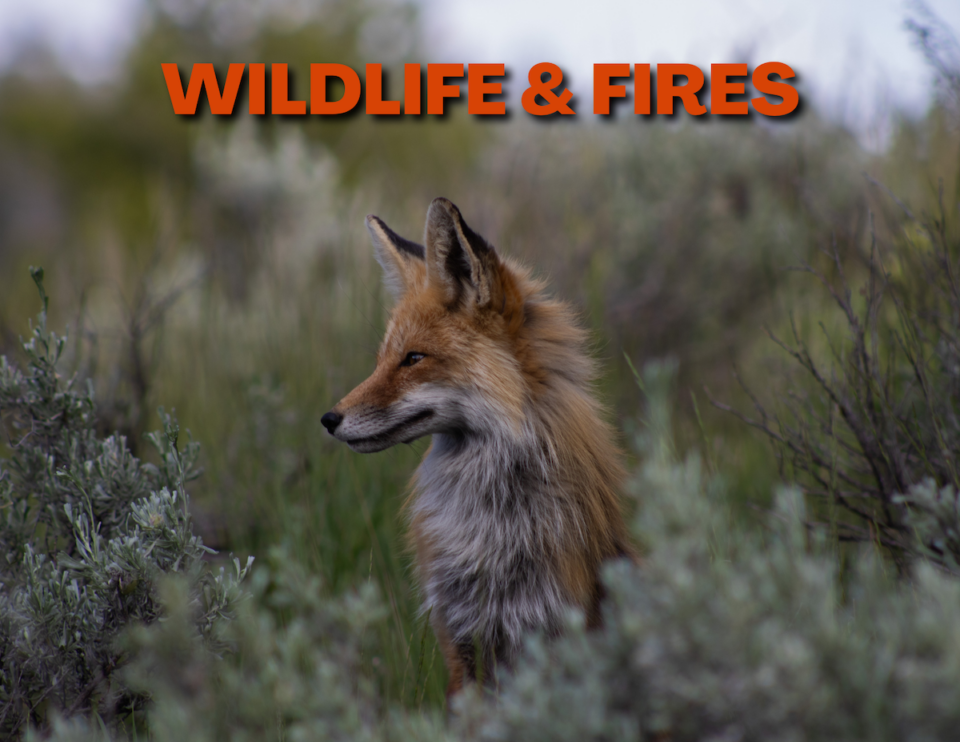This blog is a collection of the different fire education posts SIHA published this summer on our social media.

With how fire has affected the SNRA this summer, SIHA will be doing an educational series on fire, its role in nature, and how humans interact with this force of nature. So what is fire?
Fire is a visible, tangible result of the chemical process known as combustion. Combustion can start naturally when lightning or other high-heat sources raise a combustible material to its ignition temperature. At this point, molecules in the fuel vaporize and react with oxygen to produce heat, water vapor, and carbon dioxide. To sustain this reaction, combustion requires three components: heat, fuel, and oxygen. These three components form the fire triangle. If any one of these elements is removed, the reaction stops. The light produced by combustion, which we perceive as fire, occurs when energized atoms release energy in the form of light as their electrons move between energy states.
There are two types of combustion: complete and incomplete. Complete combustion occurs when there is plenty of oxygen, and it produces carbon dioxide and water vapor as the primary byproducts. Incomplete combustion happens when there is insufficient oxygen, leading to the production of smoke, soot, and other harmful byproducts such as carbon monoxide. Wildfires often exhibit both types of combustion, depending on the available oxygen, fuel conditions, and other factors, which is why they can produce both clean-burning flames and thick, smoky plumes.

Fire plays an important role in many ecosystems across the world, including the SNRA’s Lodgepole Pine forests.
Fire promotes new plant growth by breaking down dead organic matter and restoring nutrients in said matter back into the soil. This influx of nutrients in combinations of more sunlight reaching the grounds stimulates a new generation of plants to grow. Fire helps reset the time table for parts of the forest, keeping it generationally diverse. Think of fire’s role like a haircut. It gets rid of dead ends and prompts new growth
Fire also acts as an ecological trigger for some trees to release seeds. This type of behavior is called serotiny. Certain trees like some conifers found in the SNRA have serotinous cones that rely on fire to release them. The seeds are trapped inside this serotinous cone, sealed with sap, until a fire burns and melts away the adhesive. The trees have this kind of release mechanism so that their seeds sprout in ideal conditions, where there is abundant light, nutrients, and less competition.

Pine trees have also evolved to survive low intensity ground fires. Pine bark is layered in thin, tightly stacked strips to limit the amount of oxygen between the outside of the bark and the inside of the trunk. This lack of oxygen stops fire from climbing up the tree trunk and protects the more sensitive xylem, or inner layer, from burning.

Flame Retardant is a valuable tool used to fight fires across the country, and how it works is an interesting science. Flame retardants work to quell fires in two ways; to slow the process of combustion and to prevent combustion entirely. To understand how we need to break down what the product is.
Flame retardant is a mixture of water, ammonium, or salt, bound to typically phosphorus or sulfur, and a few other chemicals. This solid salt is added to water to create a liquid mixture that can be delivered via aircraft to build a defensive fire line. When the retardant drops on the ground, the water evaporates, cooling the air and slowing the process of combustion nearby. The salt, once again a solid, reacts with heat to become an acid. This acid creates a “char layer” on top of the fuel load, preventing the fuel itself from burning. The char layer is composed mostly of carbon, depleting the fire of oxygen. If you recall the fire triangle, fire needs heat, fuel, and oxygen to continue to burn. Flame retardant restricts all three of these elements, slowing the rate of spread.
A few other things are added to flame retardant to increase its effectiveness and minimize impact. A coloring agent, typically an iron-based one, gives the mixture its red color that marks where the retardant has been used and helps ground crews identify where it is needed. An important aspect of using flame retardants in fire is having crews on the ground to spread and mix the retardant into the fuel load, helping establish a line that will not burn. A thickening agent helps the mixture not be as runny. This is important because you want the mixture to stick to the fuel load and not run off into unintended areas. A corrosion inhibitor is added to prevent damage to aircraft dropping the retardant and fertilizers are added to help the ecosystem bounce back.
This fertilizer is why flame retardants are rarely used on fires near waterways where endangered species are found. Excess nutrients could cause an algae bloom, resulting in the mass die-off of aquatic animals. This is the reason why no flame retardants were used during the Bench Lake fire because of the proximity to Redfish Lake, home of our endangered Sockeye. Resource Advisors, known as “READS”, help fire crews identify these sensitive aquatic and wetland areas to minimize the retardant’s impact on areas vulnerable and valuable resources.

Did you know that wildfires can create their own weather patterns? This type of weather system is known as a firestorm.
Firestorms result from intense updrafts created as the fire heats the surrounding air. Hot air is less dense than cool air, causing it to rise rapidly and create a low-pressure zone. As the hot air column rises, it draws in cooler, denser air from the surrounding area. This circular motion can become self-perpetuating, as incoming winds stoke the fire and spread flames, leading to more combustion and further intensifying the updrafts.
One of the dramatic weather phenomena that can occur in firestorms is a fire tornado or fire whirl. These are created by spiraling upward columns of air that form in fast-moving, volatile fires. Unlike traditional tornadoes, fire whirls are primarily composed of flames and can vary in size and duration. They can move unpredictably, making them dangerous and difficult to manage. A SIHA staff member once spotted a brief fire tornado when the Wapiti Fire jumped into the Stanley Basin and quickly burned through a field of sagebrush.
Wildfires can also generate clouds known as pyrocumulus. As the fire burns, the intense heat forces ash, smoke, and water vapor high into the atmosphere. The water vapor condenses on solid particles like soot and ash, forming these towering storm clouds. Under certain conditions, pyrocumulus clouds can evolve into pyrocumulonimbus clouds, which are capable of producing lightning that can ignite new fires in nearby areas. However, the same process can sometimes result in rain that helps suppress the fire, showcasing the unpredictable nature of wildfire-induced weather



Did you know the Civilian Conservation Corp, who played an instrumental role in developing the Sawtooth Valley, also served as wildland fire fighters during the 1930s?
After the CCC was created in 1933, these men were given many job responsibilities including enforcing the government’s policy of total fire suppression. This work included taking out fuel loads, establishing fire breaks and fighting fires directly.
In the first photo, members of the CCC are working to create a fire break, similar to the way we now do to protect property and infrastructure. In the second photo, the men are taking a break at the fire line from fighting fire directly. And captured in the last photo is a female firefighter who was working the fire line during World War Two after CCC had been disbanded and the men reassigned to the war effort.
At this time total fire suppression was the US Government’s fire management policy. While we now know this practice only builds up fuel loads, making wildfires more intense, this was the policy at the time in order to protect and sustain the forest’s timber resource. The belief was that total fire suppression was “something only the Federal Government could do and was the basic foundation required before they could practice the science of forestry” – ‘The Origins of Forest Service Wildland Fire Research’ by USDA

A common question when it comes to wildfires is how does it affect animals.
Just like plants, animals have evolved over millions of years to adapt and live through fires. Animals have to rely on their senses, primarily their sense of smell, to understand when and where a fire is occurring, and the direction of safety. When a fire occurs, larger animals can typically outrun the pace of the fire, birds and other avian species can fly away, and smaller animals will seek shelter underground or under rocks. Animals will also run into bodies of water to escape the intense heat.
But not all animals go unscathed. Old and young animals have a harder time escaping the flame. Animals can also become disoriented by smoke and burn scars can result in delayed mortality. The biggest impact to wildlife happens after the fire has burned through. Habitat and food loss are the biggest threats to wildlife. As displaced animals search for new territory they are more exposed to predation and are forced closer to human development, where vehicle collisions are common.
Photo Credits
Cush currently works as a SIHA naturalist for the 2024 summer season. You may find him on quiet trails searching for wildlife and views to photograph. Cush is an amateur photographer and all photos in this blog were taken by him.